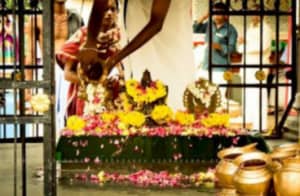







CHAKKULATHUKAVU SREE BHAGAVATHY TEMPLE
Chakkulathamma is famously known as the Mother who answers the call of her devotees. Countless pilgrims irrespective of caste creed and colour reach the shrine. The benevolent look of Goddess unfolds a thousand lotus flowers of real bhakthi in the minds of devotees. Chanting ofnames and mantras destroys the feelings of ignorance and pride like the flames of fire that overcomes the darkness.
MAJOR FESTIVALS

Naree Pooja

First Friday

Kodiyettu

Aarattu

Thiruvabharana Goshayathra

12 Noyambu








PATTAMANA DAMODARAN RADHAKRISHNAN NAMBOOTHIRI
Sri Radhakrishnan Namboothiri is the Chief Priest of the Temple. Sri Radhakrishnan Namboothiri has stamped a vivid impression in the spiritual sphere of Kerala and outside through his life of extreme spirituality as well as his predictions in betel astrology. Lakhs of people meet him for solace and blessings. He is the guide, guardian and philosopher for innumerable pilgrims in search of Santhi.

BETEL ASTROLOGY BOOKING
SADGURU Brahmashree RADHAKRISHNAN NAMBOOTHIRI, the Chief Priest of the temple and the great maestro of spirituality is engaged in predicting the past, present and future through Betel Astrology. He is believed to have received the special blessing of the Goddess. The betel astrology is performed with the help of seven betel leaves and an arecanut which the pilgrim brings. He examines shapes, natures and marks of the leaves and analyses the past, present and future of the devotees. He also uses a specially blessed conch which is rotated and its position observed, to make predictions.












